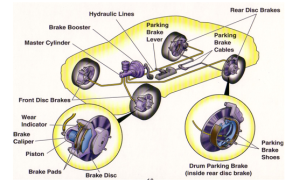Have you ever wondered how an aeroplane takes off from the ground and achieves flight.whenever I see a plane in the sky ,I gaze at it till it vanishes from my sight ;wondering if I’ll ever get a chance to fly a plane.Lets have look into this interesting phenomenon through this post.
Aircraft can be classified as fixed wing and rotary wing aircraft.
Fixed wing aircraft: A fixed wing aircraft is an aircraft capable of flight using wings that generate lift due to the vehicle’s forward airspeed and the shape of the wings. Fixed-wing aircraft are distinct from rotary-wing aircraft in which wings rotate about a fixed mast and ornithopters in which lift is generated by flapping wings.
Rotary wing aircraft: A rotorcraft or rotary wing aircraft is a heavier-than-air flying machine that uses lift generated by wings, called rotor blades, that revolve around a mast. Several rotor blades mounted to a single mast are referred to as a rotor. The International Civil Aviation Organization (ICAO) defines a rotorcraft as “supported in flight by the reactions of the air on one or more rotors”. Rotorcraft generally include those aircraft where one or more rotors are required to provide lift throughout the entire flight, such as helicopters, cyclocopters, autogyros, and gyrodynes. Compound rotorcraft may also include additional thrust engines or propellers and static lifting surfaces.

Source: HowStuffWorks.com
For an aircraft to achieve flight,you have to exploit the four basic aerodynamic forces: lift, weight, thrust and drag. They seems to be like the four arms holding the plane in the air, each pushing from a different direction.
First, let’s examine thrust and drag. Thrust, whether caused by a propeller or a jet engine, is the aerodynamic force that pushes or pulls the airplane forward through space. The opposing aerodynamic force is drag, or the friction that resists the motion of an object moving through a fluid (or immobile in a moving fluid, as occurs when you fly a kite).
If you stick your hand out of a car window while moving, you’ll experience a very simple demonstration of drag at work. The amount of drag that your hand creates depends on a few factors, such as the size of your hand, the speed of the car and the density of the air. If you were to slow down, you would notice that the drag on your hand would decrease.
We see another example of drag reduction when we watch downhill skiers in the Olympics. Whenever they get the chance, they’ll squeeze down into a tight crouch. By making themselves “smaller,” they decrease the drag they create, which allows them to zip faster down the hill.
A passenger jet always retracts its landing gear after takeoff for a similar reason: to reduce drag. Just like the downhill skier, the pilot wants to make the aircraft as small as possible. The amount of drag produced by the landing gear of a jet is so great that, at cruising speeds, the gear would be ripped right off the plane.
For flight to take place, thrust must be equal to or greater than the drag. If, for any reason, the amount of drag becomes larger than the amount of thrust, the plane will slow down. If the thrust is increased so that it’s greater than the drag, the plane will speed up.
Lift and Weight : Every object on Earth has weight, a product of both gravity and mass. A Boeing 747-8 passenger airliner, for instance, has a maximum takeoff weight of 487.5 tons (442 metric tons), the force with which the weighty plane is drawn toward the Earth.
Weight’s opposing force is lift, which holds an airplane in the air. This feat is accomplished through the use of a wing, also known as an airfoil. Like drag, lift can exist only in the presence of a moving fluid. It doesn’t matter if the object is stationary and the fluid is moving (as with a kite on a windy day), or if the fluid is still and the object is moving through it (as with a soaring jet on a windless day). What really matters is the relative difference in speeds between the object and the fluid.
As for the actual mechanics of lift, the force occurs when a moving fluid is deflected by a solid object. The wing splits the airflow in two directions: up and over the wing and down along the underside of the wing.
The wing is shaped and tilted so that the air moving over it travels faster than the air moving underneath. When moving air flows over an object and encounters an obstacle (such as a bump or a sudden increase in wing angle), its path narrows and the flow speeds up as all the molecules rush though. Once past the obstacle, the path widens and the flow slows down again. If you’ve ever pinched a water hose, you’ve observed this very principle in action. By pinching the hose, you narrow the path of the fluid flow, which speeds up the molecules. Remove the pressure and the water flow returns to its previous state.
As air speeds up, its pressure drops. So the faster-moving air moving over the wing exerts less pressure on it than the slower air moving underneath the wing. The result is an upward push of lift. In the field of fluid dynamics, this is known as Bernoulli’s principle.

Lift Mechanism
How a plane files; video


















